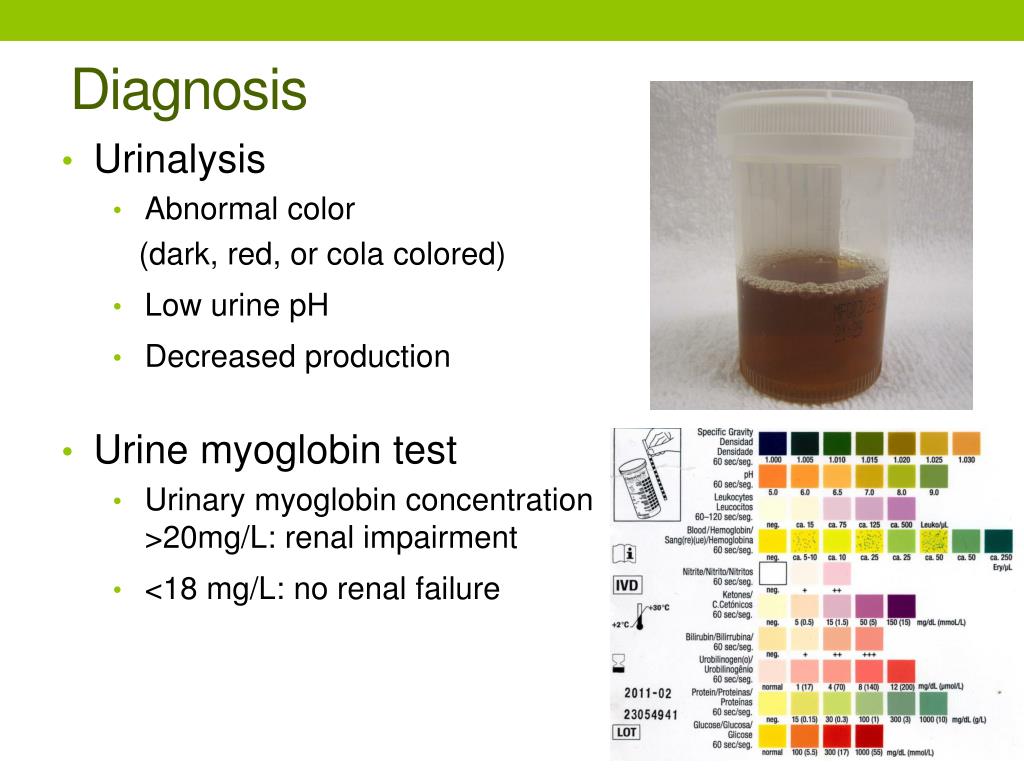Urinalysis readings. Urinalysis: Essential Guide to Reference Ranges, Interpretation, Collection, and Panels
What are the key components of a urinalysis. How do reference ranges help interpret urine test results. What methods are used for urine sample collection. Which panels are included in a comprehensive urinalysis.
Understanding the Basics of Urinalysis
Urinalysis is a crucial diagnostic tool that provides valuable insights into various aspects of health. It involves examining the physical, chemical, and microscopic properties of urine to detect and monitor a wide range of medical conditions. But what exactly does a urinalysis entail?
A typical urinalysis consists of several components:
- Visual examination: Assessing color, clarity, and odor
- Chemical analysis: Using test strips to detect various substances
- Microscopic examination: Looking for cells, crystals, and other particles
Each of these components plays a vital role in providing a comprehensive picture of an individual’s health status. By understanding the intricacies of urinalysis, healthcare professionals can make more accurate diagnoses and develop targeted treatment plans.

The Importance of Proper Urine Sample Collection
Obtaining an accurate urinalysis result begins with proper sample collection. How should one collect a urine sample for testing? The recommended method is known as the “clean catch” or “midstream” technique:
- Cleanse the genital area with water (avoid using soap)
- Begin urinating into the toilet
- After a few seconds, interrupt the flow
- Collect the middle portion of urine in a sterile container
- Finish urinating into the toilet
This technique helps minimize contamination from external sources, ensuring a more reliable sample for analysis. It’s essential to follow any additional instructions provided by your healthcare provider, as certain tests may require specific collection procedures.
Decoding Urine Color and Clarity
The visual examination of urine can provide immediate clues about a person’s health status. What can urine color tell us about our well-being?
- Pale yellow to amber: Generally indicates normal hydration
- Dark yellow or orange: May suggest dehydration
- Red or pink: Could indicate the presence of blood (hematuria)
- Brown or tea-colored: Might be a sign of liver problems or severe dehydration
- Blue or green: May be caused by certain medications or food dyes
Urine clarity is another important visual indicator. Cloudy or turbid urine may suggest the presence of bacteria, white blood cells, or other substances, potentially indicating a urinary tract infection or other conditions.

Rapid Urine Tests: Quick Insights into Health
Rapid urine tests, also known as dipstick tests, provide a quick and convenient way to assess various aspects of urine composition. How do these tests work? A specially designed strip with multiple reagent pads is briefly immersed in the urine sample. Each pad changes color based on the presence and concentration of specific substances.
What can rapid urine tests detect? Some key parameters include:
- pH (acidity level)
- Protein
- Glucose
- Ketones
- Bilirubin
- Nitrites
- Leukocytes (white blood cells)
- Blood
These tests are widely used in various healthcare settings, from primary care offices to emergency rooms, providing quick results that can guide further diagnostic or treatment decisions.
Interpreting Urinalysis Results: Reference Ranges and Their Significance
Understanding urinalysis results requires familiarity with reference ranges – the values considered normal for each parameter. How do these ranges help in interpretation? They serve as benchmarks against which individual results are compared, helping identify potential abnormalities or health concerns.
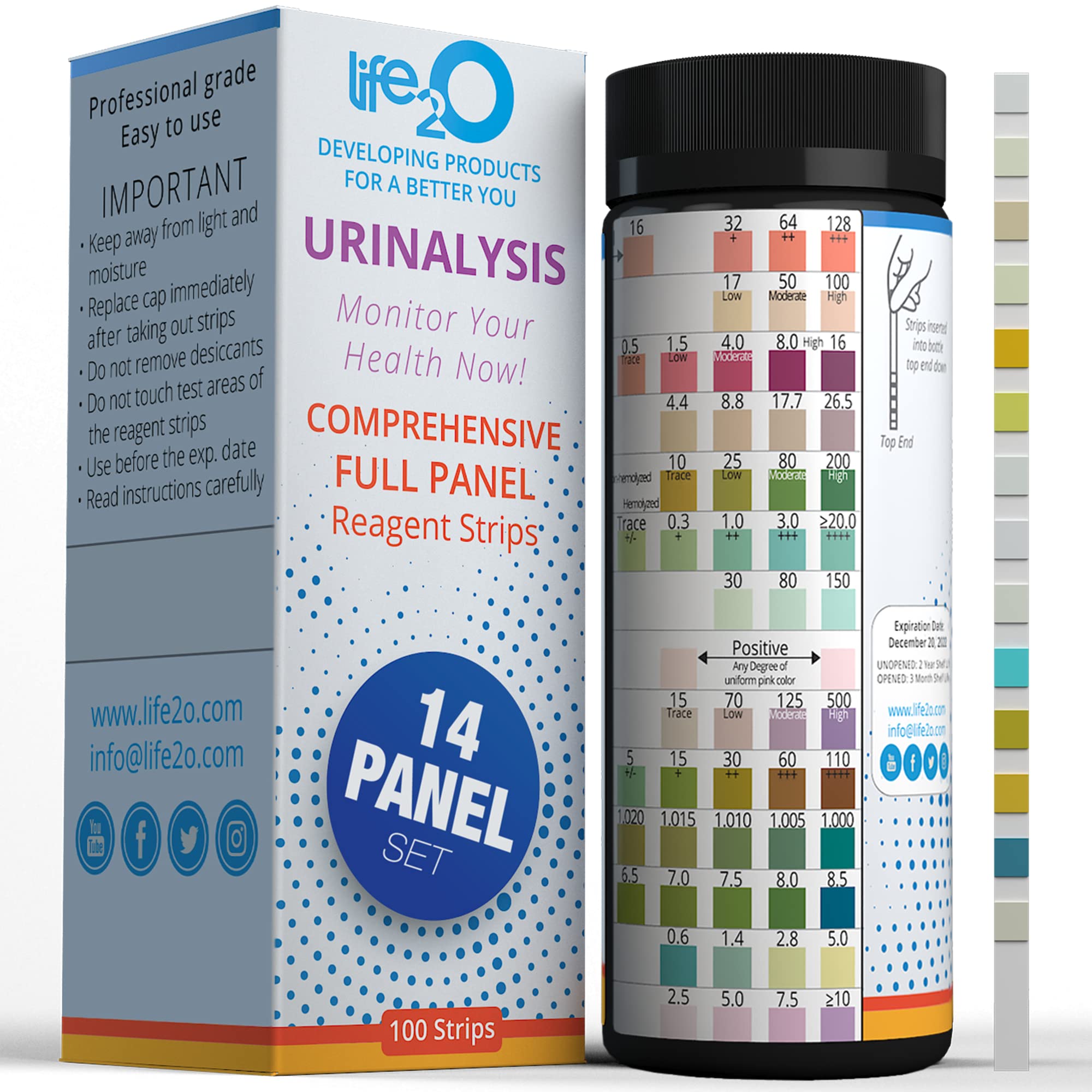
Some key reference ranges in urinalysis include:
- pH: 4.5-8 (ideally 5.5-6.5)
- Specific gravity: 1.005-1.030
- Protein: Negative or trace amounts
- Glucose: Negative
- Ketones: Negative
- Nitrites: Negative
- Leukocyte esterase: Negative
- Blood: Negative
It’s important to note that reference ranges can vary slightly between laboratories and may be influenced by factors such as age, sex, and specific medical conditions. Healthcare providers interpret results in the context of an individual’s overall health status and symptoms.
Advanced Urinalysis Techniques: Microscopic Examination
While rapid tests provide valuable information, microscopic examination of urine sediment offers a more detailed analysis. What can be discovered through this process? A trained professional can identify and quantify various cellular and non-cellular elements, including:
- Red blood cells (erythrocytes)
- White blood cells (leukocytes)
- Epithelial cells
- Bacteria
- Casts
- Crystals
The presence and quantity of these elements can provide crucial insights into kidney function, urinary tract health, and systemic diseases. For instance, the discovery of certain types of casts may indicate kidney damage, while the presence of bacteria and white blood cells might suggest a urinary tract infection.

Comprehensive Urinalysis Panels: Beyond Basic Testing
In some cases, healthcare providers may order comprehensive urinalysis panels that go beyond the standard dipstick and microscopic examinations. What additional tests might be included in these panels?
- 24-hour urine collection: Measures substances excreted over a full day
- Urine culture: Identifies specific bacterial strains in urinary tract infections
- Urine cytology: Examines cells for signs of cancer
- Drug screening: Detects the presence of various substances
- Specialized metabolic tests: Assesses for conditions like porphyria or cystinuria
These advanced panels provide a more in-depth analysis of urine composition and can be invaluable in diagnosing complex conditions or monitoring treatment efficacy.
The Role of Urinalysis in Disease Detection and Monitoring
Urinalysis plays a crucial role in detecting and monitoring a wide range of medical conditions. Which diseases can be identified or tracked through urine tests? Some key examples include:

- Urinary tract infections (UTIs)
- Kidney diseases
- Diabetes mellitus
- Liver disorders
- Bladder cancer
- Pregnancy complications
By providing early detection and ongoing monitoring capabilities, urinalysis helps healthcare providers make timely interventions and adjust treatment plans as needed. This makes it an invaluable tool in maintaining overall health and managing chronic conditions.
Factors Affecting Urinalysis Results
While urinalysis is a powerful diagnostic tool, it’s important to recognize that various factors can influence test results. What can impact the accuracy of urinalysis findings?
- Diet and hydration status
- Medications
- Menstruation
- Vigorous exercise
- Time of day
- Improper sample collection or storage
Healthcare providers take these factors into account when interpreting results, often requesting repeat tests or additional investigations if there are concerns about potential interferences or inconsistencies.
The Future of Urinalysis: Emerging Technologies and Trends
As medical science advances, so too does the field of urinalysis. What new technologies and trends are shaping the future of urine testing?

- Automated microscopy systems: Enhancing accuracy and efficiency in sediment analysis
- Point-of-care testing devices: Enabling rapid, on-site analysis in various healthcare settings
- Molecular diagnostic techniques: Detecting specific genetic markers for diseases
- Artificial intelligence and machine learning: Improving result interpretation and pattern recognition
- Wearable technology: Continuous monitoring of urine parameters for chronic disease management
These innovations promise to make urinalysis even more powerful and accessible, potentially revolutionizing disease detection and monitoring in the years to come.
Urinalysis in Special Populations
While urinalysis is a versatile diagnostic tool, its application and interpretation may vary for different population groups. How does urinalysis differ for special populations?
- Pediatric patients: May require special collection techniques and have different reference ranges
- Pregnant women: Undergo regular urinalysis to monitor for conditions like preeclampsia and gestational diabetes
- Elderly individuals: May have altered reference ranges due to age-related changes in kidney function
- Athletes: May show temporary changes in urine composition due to intense physical activity
Healthcare providers must consider these population-specific factors when ordering and interpreting urinalysis results, ensuring accurate diagnosis and appropriate treatment for all patients.

The Importance of Follow-Up Testing
While urinalysis can provide valuable insights, it’s often just the first step in the diagnostic process. Why is follow-up testing crucial in many cases?
- Confirmation of abnormal results
- Further investigation of underlying causes
- Monitoring of treatment effectiveness
- Detection of disease progression or recurrence
Healthcare providers may recommend additional tests such as blood work, imaging studies, or specialized urine tests based on initial urinalysis findings. This comprehensive approach ensures a thorough evaluation of the patient’s health status and guides appropriate treatment decisions.
Patient Education and Preparation for Urinalysis
Proper patient education and preparation are essential for obtaining accurate urinalysis results. What should patients know before undergoing a urine test?
- The purpose of the test and its importance in their healthcare
- Proper sample collection techniques
- Any dietary or medication restrictions prior to testing
- The potential need for multiple samples or follow-up tests
- How and when they will receive their results
By providing clear instructions and information, healthcare providers can help ensure that patients are well-prepared for their urinalysis, leading to more reliable results and a smoother diagnostic process.

Integrating Urinalysis with Other Diagnostic Tools
While urinalysis is a powerful diagnostic tool on its own, its true potential is realized when integrated with other clinical assessments and tests. How does urinalysis complement other diagnostic methods?
- Physical examination: Urinalysis can confirm or refute clinical suspicions
- Blood tests: Combine with urinalysis to provide a comprehensive metabolic picture
- Imaging studies: Urinalysis findings may guide the need for ultrasounds, CT scans, or other imaging
- Genetic testing: Urinalysis can indicate the need for more specific genetic analyses
- Biopsy: Abnormal urinalysis results may necessitate tissue sampling for definitive diagnosis
By using urinalysis in conjunction with these other diagnostic tools, healthcare providers can develop a more complete understanding of a patient’s health status, leading to more accurate diagnoses and targeted treatment plans.
The Role of Urinalysis in Preventive Medicine
Beyond its diagnostic capabilities, urinalysis plays a crucial role in preventive medicine. How does routine urinalysis contribute to overall health maintenance?

- Early detection of asymptomatic conditions
- Monitoring of chronic disease progression
- Assessment of overall metabolic health
- Evaluation of hydration status
- Screening for occupational exposure to toxins
By incorporating regular urinalysis into preventive health check-ups, healthcare providers can identify potential health issues before they become serious, allowing for earlier intervention and better long-term outcomes.
Ethical Considerations in Urinalysis
As with any medical test, urinalysis raises certain ethical considerations that healthcare providers and patients should be aware of. What are some key ethical issues surrounding urine testing?
- Privacy concerns, especially in workplace or school testing
- Informed consent for testing and result sharing
- Potential for discrimination based on test results
- Proper handling and disposal of biological samples
- Ethical use of results in research settings
Addressing these ethical considerations is crucial for maintaining patient trust and ensuring that urinalysis is used responsibly and beneficially in healthcare and other settings.

As we continue to explore the vast potential of urinalysis in healthcare, it’s clear that this simple yet powerful diagnostic tool will remain a cornerstone of medical practice for years to come. By understanding its capabilities, limitations, and proper application, both healthcare providers and patients can make the most of this invaluable resource in the pursuit of better health outcomes.
Understanding urine tests – InformedHealth.org
Created: July 27, 2010; Last Update: October 24, 2019; Next update: 2022.
Most people will have already given a urine sample at some point in their lives. A sample can be analyzed using a number of different tests. These tests can help doctors diagnose certain diseases or to monitor their progress. For example, urine test strips can show whether you may have a urinary tract infection or diabetes.
Here we describe the various urine tests, what they can be used for, and what the results tell us.
What do the characteristics of urine tell us?
The elimination of urine is very important for different bodily functions. It regulates the balance of water in the body, for example, and also gets rid of substances that are produced during metabolic processes and are no longer needed by the body. These include toxic substances in food or medicines. Urine tests can help detect diseases of the urinary system as well as metabolic diseases like diabetes or liver disease.
The color, odor and amount of urine can already indicate whether something is wrong. If, for instance, someone passes only a little very dark urine, it could be a sign that they have not had enough to drink – or that their kidneys are no longer working properly. Cloudy or flaky urine could be a sign of a urinary tract infection. If the urine is reddish in color, there might be blood in it. To find out more, the urine needs to be tested using a test strip or in a lab.
Five standard urine tests can be used to examine the different components of urine. Two of them can also be done at home, whereas the other three can only be done in a lab.
How do you give a urine sample?
Urine can easily be contaminated by bacteria, cells and other substances so it is a good idea to cleanse the genital area with water – but not soap – before giving a sample. To get an accurate result and avoid bacterial contamination, “clean” midstream urine is used. You take a sample of midstream urine by interrupting the flow of urine after a few seconds and then collecting this middle portion of the urine in a cup. Your doctor will let you know if there is anything else you should pay attention to for your specific test.
Your doctor will let you know if there is anything else you should pay attention to for your specific test.
Rapid urine test
What is a rapid urine test?
A rapid urine test is the quickest way to test urine. This involves dipping a test strip with small square colored fields on it into the urine sample for a few seconds. After that you have to wait a little for the result to appear. Depending on the concentration of the particular substance you are testing for, the fields on the test strip change color. Then the resulting colors of the fields are compared with a color table. The color table can be found on the urine test package. It shows which colors indicate normal and abnormal values.
In a rapid urine test, a test strip is dipped into the urine and then compared with the colored fields on the packaging.
Rapid urine tests are usually done as part of routine examinations – for example at a family doctor’s office, during antenatal visits, when being admitted to the hospital, or before surgery. They are also used in people who have acute symptoms like lower abdominal pain, stomach ache or back pain, frequent painful urination, or blood in their urine. Some people who have diabetes use this test to check their sugar levels.
They are also used in people who have acute symptoms like lower abdominal pain, stomach ache or back pain, frequent painful urination, or blood in their urine. Some people who have diabetes use this test to check their sugar levels.
Rapid urine tests can be done at doctor’s offices, in hospital, or at home. The test strips are available without a prescription at the pharmacy or on the internet. But they are not intended for self-diagnosis purposes, and should be used in consultation with a doctor.
What substances can a rapid urine test detect?
Many substances are usually found only in certain amounts in urine, so higher or lower levels indicate a deviation from the norm.
The following substances can be checked using a rapid urine test:
pH value (measure of the acidity of the urine. Normal values, depending on diet, range from about 5 to 7, where values under 5 are too acidic, and values over 7 are not acidic enough)
Protein (not usually found in urine)
Sugar (glucose, not usually found in urine)
Nitrite (not usually found in urine)
Ketone (a metabolic product, not usually found in urine)
Bilirubin (breakdown product of hemoglobin, not usually found in urine)
Urobilinogen (breakdown product of bilirubin, not usually found in urine)
Red blood cells (erythrocytes, not usually found in urine)
White blood cells (leukocytes, not usually found in urine)
What do the results tell us?
You can determine whether the results are within the normal range by using the package insert or the color chart on the package.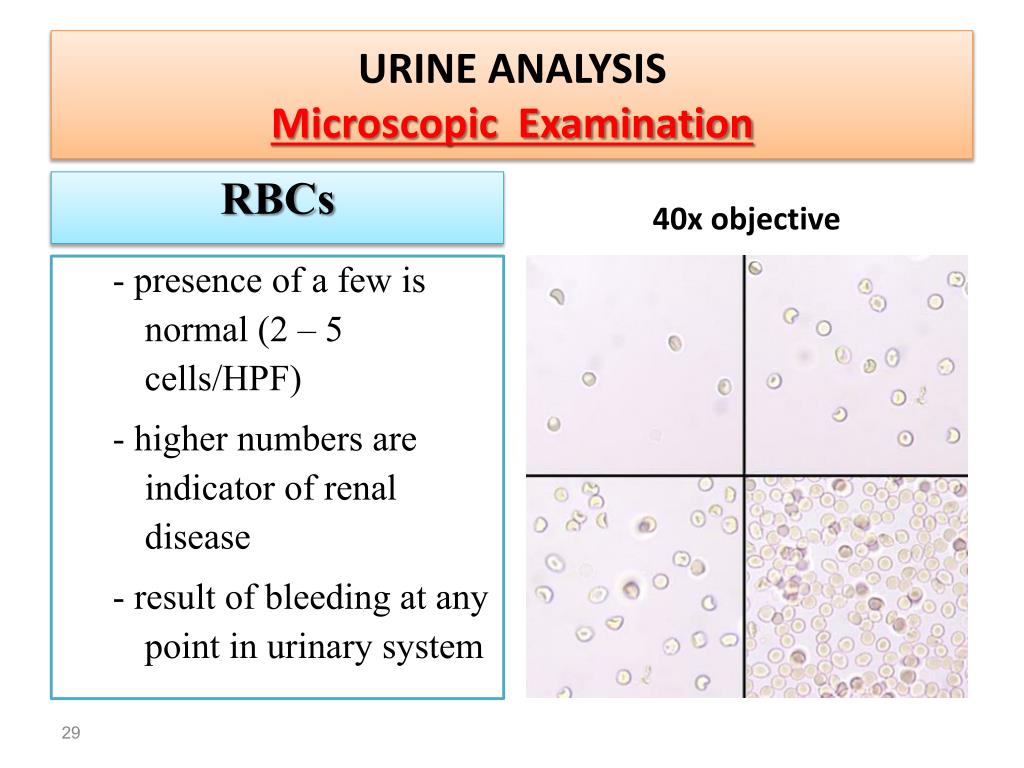 The pH value, for example, can be used to find out whether there is an increased risk of developing urinary stones. This is the case if the pH is too acidic (if the value is below 5). A pH value over 7 may be a sign of a bacterial urinary tract infection. Tests measuring other things can help detect other problems:
The pH value, for example, can be used to find out whether there is an increased risk of developing urinary stones. This is the case if the pH is too acidic (if the value is below 5). A pH value over 7 may be a sign of a bacterial urinary tract infection. Tests measuring other things can help detect other problems:
High protein levels may be a sign of nephritis (a kidney inflammation).
Ketones and sugar in urine are signs of high blood sugar.
Leukocytes or nitrite may be a sign of a bacterial infection.
If the test results are abnormal, you need to see a doctor. As with all tests, the results of rapid urine tests are not always reliable. For this reason, it might be a good idea to have a more detailed test done in a lab.
Urinalysis
What is urinalysis?
Urinalysis is an initial basic test of the main features of the blood. It is often part of a routine examination and is frequently performed when people are admitted to hospital and before surgery. It can also be used to check abnormal results from a rapid urine test. Complete urinalysis is done in a laboratory. It usually involves three steps:
It can also be used to check abnormal results from a rapid urine test. Complete urinalysis is done in a laboratory. It usually involves three steps:
Assessment of the color, cloudiness and concentration of the urine
Examination of the chemical composition of the urine using a test strip
Examination of the urine under a microscope to look for bacteria, cells and parts of cells
Using a microscope to examine the solid parts of urine: the picture shows red blood cells (above), white blood cells (middle) and a cast of clumped-together white blood cells (below).
Urinalysis is used to find the cause of – or monitor – urinary tract infections, bleeding in the urinary system, or kidney or liver disease. It can also be used for diabetes, some diseases of the blood, and bladder stones.
What does urinalysis test for?
In addition to the substances that can be detected using a rapid test, urinalysis can also test for the following:
Creatinine (breakdown product of muscle metabolism, an indicator of kidney function)
Bacteria (not usually found in urine)
Urinary casts (cylindrical stuck-together structures that form in the renal tubules, not usually found in urine)
Crystals (found if there are high concentrations of certain substances in the urine, not usually found in urine)
Epithelial cells (cells that line the ureter, bladder and urethra)
What do the results tell us?
With the help of these values, laboratories can also use urinalysis to detect signs of other problems:
Cholesterol crystals can be caused by high levels of cholesterol in the urine, for example.

Urinary casts are usually a sign of kidney disease, such as an inflammation of the renal pelvis.
Abnormal results can be discussed with a doctor and may be followed by more precise tests, such as a blood test.
Urine culture
What is a urine culture?
A urine culture is a test done in a laboratory to see whether urine has germs in it. A sample of midstream urine is put into a container. Then small plates with a growth medium that the germs can grow on are put into the sample and the container is closed tightly. The urine culture is then placed in an incubator for one to two days. If there are bacteria or fungi in the urine, visible colonies can grow.
Round petri dish with bacteria or fungi taken from urine. These become visible after two to four days in an incubator.
What can urine cultures test for?
Urine cultures can be done to test whether there are bacteria or fungi in urine. If this is the case, you can often already see what type of bacteria or fungi they are, based on the size, form and color of the colonies.
What do the results tell us?
Urine cultures are usually done to detect bacteria and fungi in urine when testing for a urinary tract infection. If bacteria are found during laboratory testing, then the type of antibiotic needed is usually determined at the same time.
24-hour urine collection
What is 24-hour urine collection?
This test involves collecting urine over a period of 24 hours: The first urine sample after waking up is not used, but the time of urination is noted. From then on, for the next 24 hours every single drop of urine is collected in a container. Once the 24 hours are up, you empty your bladder one last time and the urine is added to the sample already collected. Your doctor will give you the container for the urine sample. The container usually already has a substance in it to prevent bacteria from growing while the urine is still being collected. The urine should be kept in a refrigerator for the entire 24-hour period. It is then tested in a laboratory.
What can be tested with a 24-hour urine sample?
24-hour urine samples can be used to find out what amounts of certain substances (such as proteins, hormones, salts and metabolic products) are excreted from the body.
What do the results tell us?
The test results can tell us, for instance, how much protein and creatinine are in the urine. If too little of the metabolic product creatinine is being filtered out of the blood by the kidneys, the kidneys may not be working properly. High levels of protein in urine, known as proteinuria, can be caused by conditions such as heart failure, diabetes, inflammation of the renal pelvis, urinary tract infections, kidney disease or kidney cancer.
Some disorders of the endocrine (hormonal) system increase the amount of hormones and their metabolic products in the urine. In order to detect those disorders, urine is often collected over a 24-hour period on several days and then tested.
Pregnancy tests
What is a pregnancy test?
If your menstrual period is late, there are different tests available to find out whether you are pregnant. But they are not absolutely reliable. Most tests can already determine whether a woman is pregnant eight to ten days after her period was due. They are usually done like rapid urine tests, using a urine sample in the morning after getting up. You can find exact instructions in the package insert. Pregnancy tests can be bought in pharmacies, drugstores, department stores and on the internet.
But they are not absolutely reliable. Most tests can already determine whether a woman is pregnant eight to ten days after her period was due. They are usually done like rapid urine tests, using a urine sample in the morning after getting up. You can find exact instructions in the package insert. Pregnancy tests can be bought in pharmacies, drugstores, department stores and on the internet.
What can be checked with a pregnancy test?
The urine of pregnant women contains a special hormone known as human chorionic gonadotropin (hCG), which is produced in the placenta.
What do the results tell us?
Many women who would like to find out whether they are pregnant will first do a pregnancy test. The results might be false if a woman does the test too soon, is taking medicine or drinks a lot of fluids before doing the test. Only a doctor can say for sure whether you are pregnant or not.
Other urine tests
Drugs can also be detected in urine for a while after being used. Depending on the type of test, cannabis can be detected up to several weeks after being consumed. Drugs like cocaine, ecstasy or heroin can show up in test results for up to five days. Various types of tests can be used here too: Rapid tests help give police fast results on site, while other drug tests need to be sent to a laboratory. Urine samples can also be used to test athletes for banned performance-enhancing substances (doping).
Depending on the type of test, cannabis can be detected up to several weeks after being consumed. Drugs like cocaine, ecstasy or heroin can show up in test results for up to five days. Various types of tests can be used here too: Rapid tests help give police fast results on site, while other drug tests need to be sent to a laboratory. Urine samples can also be used to test athletes for banned performance-enhancing substances (doping).
Sources
Andreae S, Avelini P, Berg M, Blank I, Burk A. Lexikon der Krankheiten und Untersuchungen. Stuttgart: Thieme; 2008.
Gemeinsamer Bundesausschuss (G-BA). Mutterschafts-Richtlinien: Richtlinien über die ärztliche Betreuung während der Schwangerschaft und nach der Entbindung. May 28, 2019.
Pschyrembel. Klinisches Wörterbuch. Berlin: De Gruyter; 2017.
Thomas L. Labor und Diagnose. Indikation und Bewertung von Laborbefunden für die medizinische Diagnostik. Marburg: Medizinische Verlagsgesellschaft; 2007.

IQWiG health information is written with the aim of helping
people understand the advantages and disadvantages of the main treatment options and health
care services.Because IQWiG is a German institute, some of the information provided here is specific to the
German health care system. The suitability of any of the described options in an individual
case can be determined by talking to a doctor. We do not offer individual consultations.Our information is based on the results of good-quality studies. It is written by a
team of
health care professionals, scientists and editors, and reviewed by external experts. You can
find a detailed description of how our health information is produced and updated in
our methods.
Understanding urine tests – InformedHealth.org
Created: July 27, 2010; Last Update: October 24, 2019; Next update: 2022.
Most people will have already given a urine sample at some point in their lives. A sample can be analyzed using a number of different tests. These tests can help doctors diagnose certain diseases or to monitor their progress. For example, urine test strips can show whether you may have a urinary tract infection or diabetes.
These tests can help doctors diagnose certain diseases or to monitor their progress. For example, urine test strips can show whether you may have a urinary tract infection or diabetes.
Here we describe the various urine tests, what they can be used for, and what the results tell us.
What do the characteristics of urine tell us?
The elimination of urine is very important for different bodily functions. It regulates the balance of water in the body, for example, and also gets rid of substances that are produced during metabolic processes and are no longer needed by the body. These include toxic substances in food or medicines. Urine tests can help detect diseases of the urinary system as well as metabolic diseases like diabetes or liver disease.
The color, odor and amount of urine can already indicate whether something is wrong. If, for instance, someone passes only a little very dark urine, it could be a sign that they have not had enough to drink – or that their kidneys are no longer working properly. Cloudy or flaky urine could be a sign of a urinary tract infection. If the urine is reddish in color, there might be blood in it. To find out more, the urine needs to be tested using a test strip or in a lab.
Cloudy or flaky urine could be a sign of a urinary tract infection. If the urine is reddish in color, there might be blood in it. To find out more, the urine needs to be tested using a test strip or in a lab.
Five standard urine tests can be used to examine the different components of urine. Two of them can also be done at home, whereas the other three can only be done in a lab.
How do you give a urine sample?
Urine can easily be contaminated by bacteria, cells and other substances so it is a good idea to cleanse the genital area with water – but not soap – before giving a sample. To get an accurate result and avoid bacterial contamination, “clean” midstream urine is used. You take a sample of midstream urine by interrupting the flow of urine after a few seconds and then collecting this middle portion of the urine in a cup. Your doctor will let you know if there is anything else you should pay attention to for your specific test.
Rapid urine test
What is a rapid urine test?
A rapid urine test is the quickest way to test urine.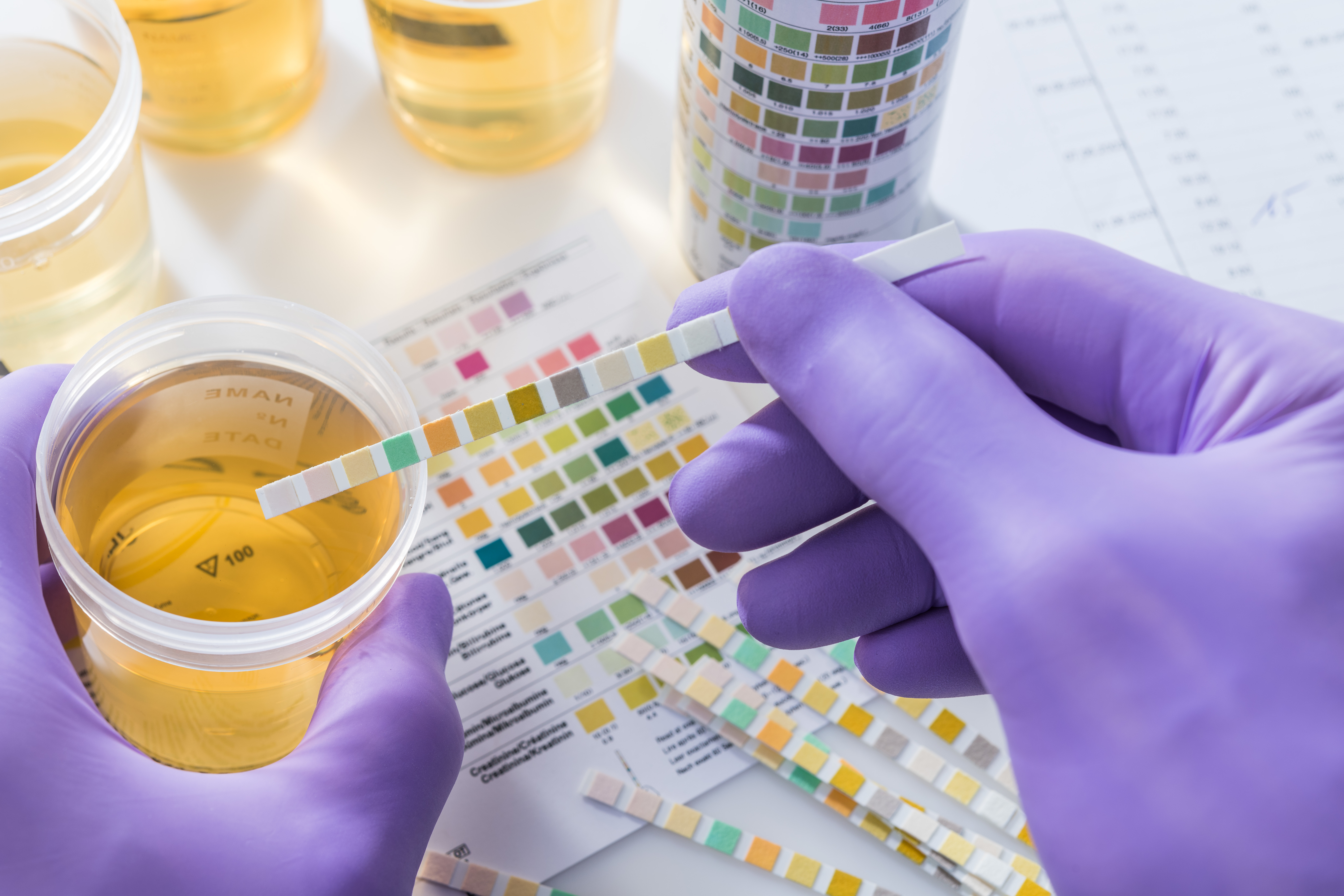 This involves dipping a test strip with small square colored fields on it into the urine sample for a few seconds. After that you have to wait a little for the result to appear. Depending on the concentration of the particular substance you are testing for, the fields on the test strip change color. Then the resulting colors of the fields are compared with a color table. The color table can be found on the urine test package. It shows which colors indicate normal and abnormal values.
This involves dipping a test strip with small square colored fields on it into the urine sample for a few seconds. After that you have to wait a little for the result to appear. Depending on the concentration of the particular substance you are testing for, the fields on the test strip change color. Then the resulting colors of the fields are compared with a color table. The color table can be found on the urine test package. It shows which colors indicate normal and abnormal values.
In a rapid urine test, a test strip is dipped into the urine and then compared with the colored fields on the packaging.
Rapid urine tests are usually done as part of routine examinations – for example at a family doctor’s office, during antenatal visits, when being admitted to the hospital, or before surgery. They are also used in people who have acute symptoms like lower abdominal pain, stomach ache or back pain, frequent painful urination, or blood in their urine. Some people who have diabetes use this test to check their sugar levels.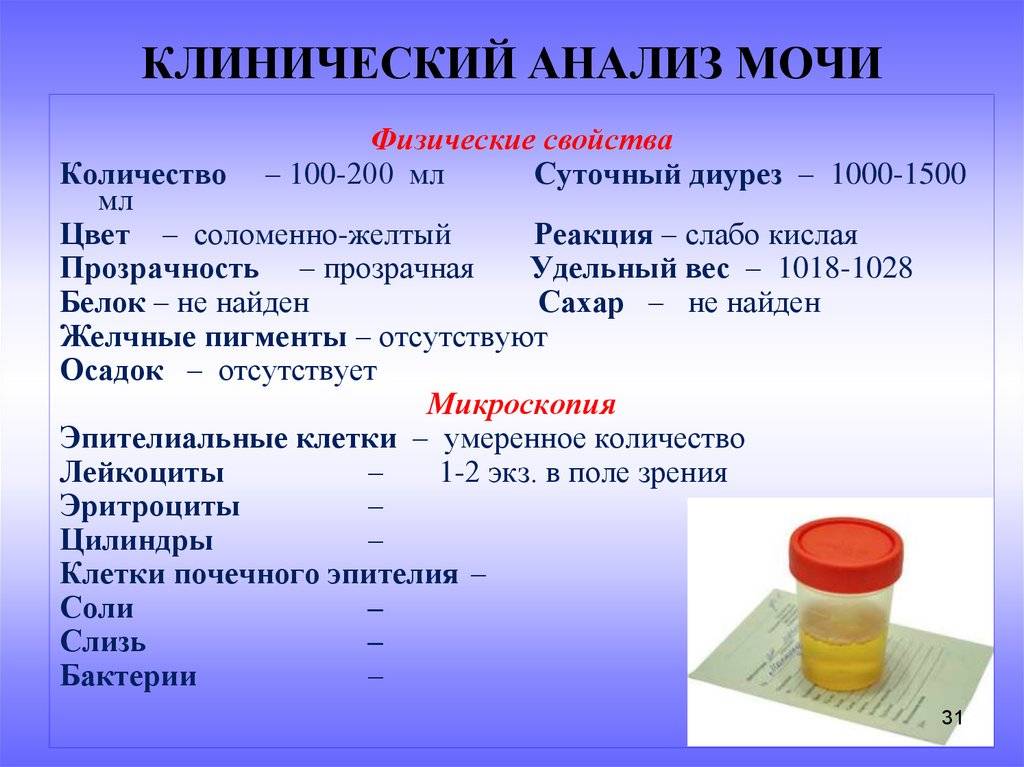
Rapid urine tests can be done at doctor’s offices, in hospital, or at home. The test strips are available without a prescription at the pharmacy or on the internet. But they are not intended for self-diagnosis purposes, and should be used in consultation with a doctor.
What substances can a rapid urine test detect?
Many substances are usually found only in certain amounts in urine, so higher or lower levels indicate a deviation from the norm.
The following substances can be checked using a rapid urine test:
pH value (measure of the acidity of the urine. Normal values, depending on diet, range from about 5 to 7, where values under 5 are too acidic, and values over 7 are not acidic enough)
Protein (not usually found in urine)
Sugar (glucose, not usually found in urine)
Nitrite (not usually found in urine)
Ketone (a metabolic product, not usually found in urine)
Bilirubin (breakdown product of hemoglobin, not usually found in urine)
Urobilinogen (breakdown product of bilirubin, not usually found in urine)
Red blood cells (erythrocytes, not usually found in urine)
White blood cells (leukocytes, not usually found in urine)
What do the results tell us?
You can determine whether the results are within the normal range by using the package insert or the color chart on the package. The pH value, for example, can be used to find out whether there is an increased risk of developing urinary stones. This is the case if the pH is too acidic (if the value is below 5). A pH value over 7 may be a sign of a bacterial urinary tract infection. Tests measuring other things can help detect other problems:
The pH value, for example, can be used to find out whether there is an increased risk of developing urinary stones. This is the case if the pH is too acidic (if the value is below 5). A pH value over 7 may be a sign of a bacterial urinary tract infection. Tests measuring other things can help detect other problems:
High protein levels may be a sign of nephritis (a kidney inflammation).
Ketones and sugar in urine are signs of high blood sugar.
Leukocytes or nitrite may be a sign of a bacterial infection.
If the test results are abnormal, you need to see a doctor. As with all tests, the results of rapid urine tests are not always reliable. For this reason, it might be a good idea to have a more detailed test done in a lab.
Urinalysis
What is urinalysis?
Urinalysis is an initial basic test of the main features of the blood. It is often part of a routine examination and is frequently performed when people are admitted to hospital and before surgery. It can also be used to check abnormal results from a rapid urine test. Complete urinalysis is done in a laboratory. It usually involves three steps:
It can also be used to check abnormal results from a rapid urine test. Complete urinalysis is done in a laboratory. It usually involves three steps:
Assessment of the color, cloudiness and concentration of the urine
Examination of the chemical composition of the urine using a test strip
Examination of the urine under a microscope to look for bacteria, cells and parts of cells
Using a microscope to examine the solid parts of urine: the picture shows red blood cells (above), white blood cells (middle) and a cast of clumped-together white blood cells (below).
Urinalysis is used to find the cause of – or monitor – urinary tract infections, bleeding in the urinary system, or kidney or liver disease. It can also be used for diabetes, some diseases of the blood, and bladder stones.
What does urinalysis test for?
In addition to the substances that can be detected using a rapid test, urinalysis can also test for the following:
Creatinine (breakdown product of muscle metabolism, an indicator of kidney function)
Bacteria (not usually found in urine)
Urinary casts (cylindrical stuck-together structures that form in the renal tubules, not usually found in urine)
Crystals (found if there are high concentrations of certain substances in the urine, not usually found in urine)
Epithelial cells (cells that line the ureter, bladder and urethra)
What do the results tell us?
With the help of these values, laboratories can also use urinalysis to detect signs of other problems:
Cholesterol crystals can be caused by high levels of cholesterol in the urine, for example.

Urinary casts are usually a sign of kidney disease, such as an inflammation of the renal pelvis.
Abnormal results can be discussed with a doctor and may be followed by more precise tests, such as a blood test.
Urine culture
What is a urine culture?
A urine culture is a test done in a laboratory to see whether urine has germs in it. A sample of midstream urine is put into a container. Then small plates with a growth medium that the germs can grow on are put into the sample and the container is closed tightly. The urine culture is then placed in an incubator for one to two days. If there are bacteria or fungi in the urine, visible colonies can grow.
Round petri dish with bacteria or fungi taken from urine. These become visible after two to four days in an incubator.
What can urine cultures test for?
Urine cultures can be done to test whether there are bacteria or fungi in urine. If this is the case, you can often already see what type of bacteria or fungi they are, based on the size, form and color of the colonies.
What do the results tell us?
Urine cultures are usually done to detect bacteria and fungi in urine when testing for a urinary tract infection. If bacteria are found during laboratory testing, then the type of antibiotic needed is usually determined at the same time.
24-hour urine collection
What is 24-hour urine collection?
This test involves collecting urine over a period of 24 hours: The first urine sample after waking up is not used, but the time of urination is noted. From then on, for the next 24 hours every single drop of urine is collected in a container. Once the 24 hours are up, you empty your bladder one last time and the urine is added to the sample already collected. Your doctor will give you the container for the urine sample. The container usually already has a substance in it to prevent bacteria from growing while the urine is still being collected. The urine should be kept in a refrigerator for the entire 24-hour period. It is then tested in a laboratory.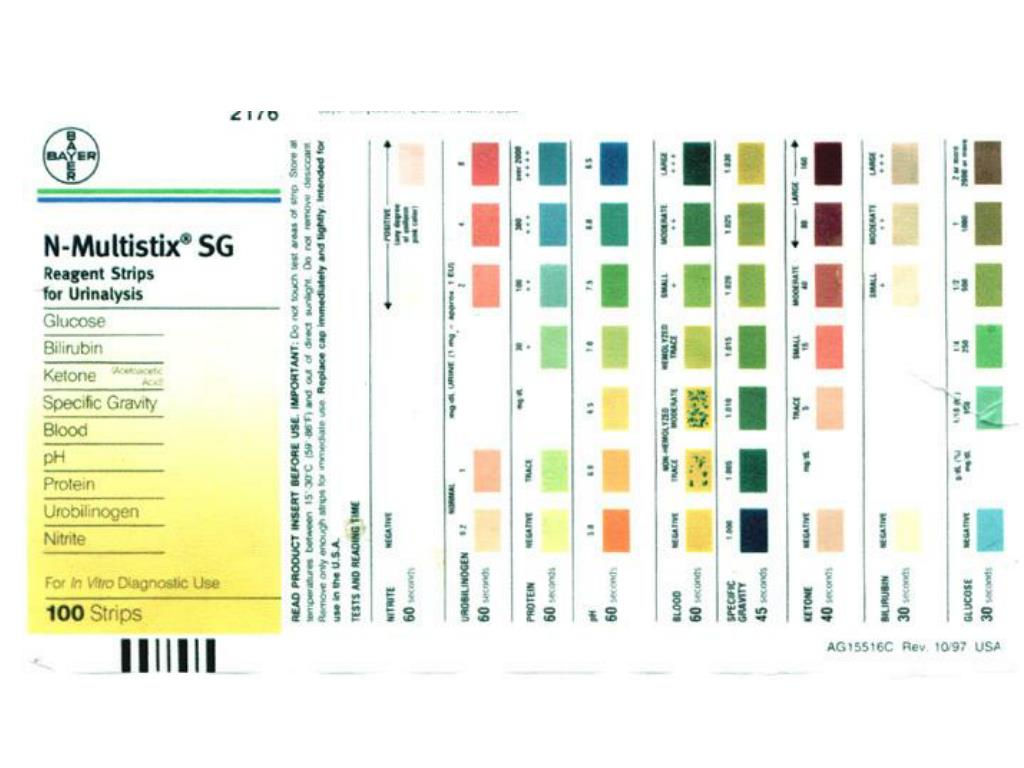
What can be tested with a 24-hour urine sample?
24-hour urine samples can be used to find out what amounts of certain substances (such as proteins, hormones, salts and metabolic products) are excreted from the body.
What do the results tell us?
The test results can tell us, for instance, how much protein and creatinine are in the urine. If too little of the metabolic product creatinine is being filtered out of the blood by the kidneys, the kidneys may not be working properly. High levels of protein in urine, known as proteinuria, can be caused by conditions such as heart failure, diabetes, inflammation of the renal pelvis, urinary tract infections, kidney disease or kidney cancer.
Some disorders of the endocrine (hormonal) system increase the amount of hormones and their metabolic products in the urine. In order to detect those disorders, urine is often collected over a 24-hour period on several days and then tested.
Pregnancy tests
What is a pregnancy test?
If your menstrual period is late, there are different tests available to find out whether you are pregnant. But they are not absolutely reliable. Most tests can already determine whether a woman is pregnant eight to ten days after her period was due. They are usually done like rapid urine tests, using a urine sample in the morning after getting up. You can find exact instructions in the package insert. Pregnancy tests can be bought in pharmacies, drugstores, department stores and on the internet.
But they are not absolutely reliable. Most tests can already determine whether a woman is pregnant eight to ten days after her period was due. They are usually done like rapid urine tests, using a urine sample in the morning after getting up. You can find exact instructions in the package insert. Pregnancy tests can be bought in pharmacies, drugstores, department stores and on the internet.
What can be checked with a pregnancy test?
The urine of pregnant women contains a special hormone known as human chorionic gonadotropin (hCG), which is produced in the placenta.
What do the results tell us?
Many women who would like to find out whether they are pregnant will first do a pregnancy test. The results might be false if a woman does the test too soon, is taking medicine or drinks a lot of fluids before doing the test. Only a doctor can say for sure whether you are pregnant or not.
Other urine tests
Drugs can also be detected in urine for a while after being used. Depending on the type of test, cannabis can be detected up to several weeks after being consumed. Drugs like cocaine, ecstasy or heroin can show up in test results for up to five days. Various types of tests can be used here too: Rapid tests help give police fast results on site, while other drug tests need to be sent to a laboratory. Urine samples can also be used to test athletes for banned performance-enhancing substances (doping).
Depending on the type of test, cannabis can be detected up to several weeks after being consumed. Drugs like cocaine, ecstasy or heroin can show up in test results for up to five days. Various types of tests can be used here too: Rapid tests help give police fast results on site, while other drug tests need to be sent to a laboratory. Urine samples can also be used to test athletes for banned performance-enhancing substances (doping).
Sources
Andreae S, Avelini P, Berg M, Blank I, Burk A. Lexikon der Krankheiten und Untersuchungen. Stuttgart: Thieme; 2008.
Gemeinsamer Bundesausschuss (G-BA). Mutterschafts-Richtlinien: Richtlinien über die ärztliche Betreuung während der Schwangerschaft und nach der Entbindung. May 28, 2019.
Pschyrembel. Klinisches Wörterbuch. Berlin: De Gruyter; 2017.
Thomas L. Labor und Diagnose. Indikation und Bewertung von Laborbefunden für die medizinische Diagnostik. Marburg: Medizinische Verlagsgesellschaft; 2007.

IQWiG health information is written with the aim of helping
people understand the advantages and disadvantages of the main treatment options and health
care services.Because IQWiG is a German institute, some of the information provided here is specific to the
German health care system. The suitability of any of the described options in an individual
case can be determined by talking to a doctor. We do not offer individual consultations.Our information is based on the results of good-quality studies. It is written by a
team of
health care professionals, scientists and editors, and reviewed by external experts. You can
find a detailed description of how our health information is produced and updated in
our methods.
General analysis of urine OAM: decoding of norms and deviations
Urinalysis is increasingly evaluating the machine, and the result is more like a check in a supermarket. We will help you understand medical hieroglyphs.

Doctor’s consultation
You can get the consultation of the necessary specialist online in the Doctis application
Laboratory
You can undergo a comprehensive examination of all major body systems
how to decipher the indicators of a general blood test.
Today our expert explains how to interpret deviations from the norm
in urine analysis.
- Urine color norm
- Urine clarity index
- Relative density
- Urine pH
- Protein (PRO)
- Glucose in urine (GLU)
- Bilirubin (BIL)
- Urobilinogen (UBG)
- Ketone bodies (KET)
- Hemoglobin in urine
- Nitrite (NIT) in urine
Urinalysis interpretation – norms of indicators
Color (color). Urine color norm – straw yellow
The natural color of urine is straw yellow. Urine pigments – urochromes – give concentrated
urine more saturated, dark color. When the urine is weakly concentrated and there is little pigment in it,
When the urine is weakly concentrated and there is little pigment in it,
the color becomes light yellow. Changes in the color of urine can be physiological, for example, after the appearance of
food chromogens: red color appears after eating beets, yellow-brown after rhubarb or
carrots.
Urine will turn red when traces of hemoglobin decay appear after hypothermia,
long walk or run. Also, a change in urine can be a consequence of diseases: darkening of urine – with
hepatitis, cirrhosis, obstructive jaundice, lightening – in diabetes mellitus, redness – when
blood in urine.
Urine transparency index (complete/incomplete). Norm – full
Cloudy urine – a sign of the presence of epithelium or mucus (normal), or leukocytes, erythrocytes, bacteria,
precipitation of salts (in pathology).
Relative density (S.
G). Norm – 1010−1023
This indicator evaluates the ability of the kidneys to concentrate urine, that is, to perform their main function.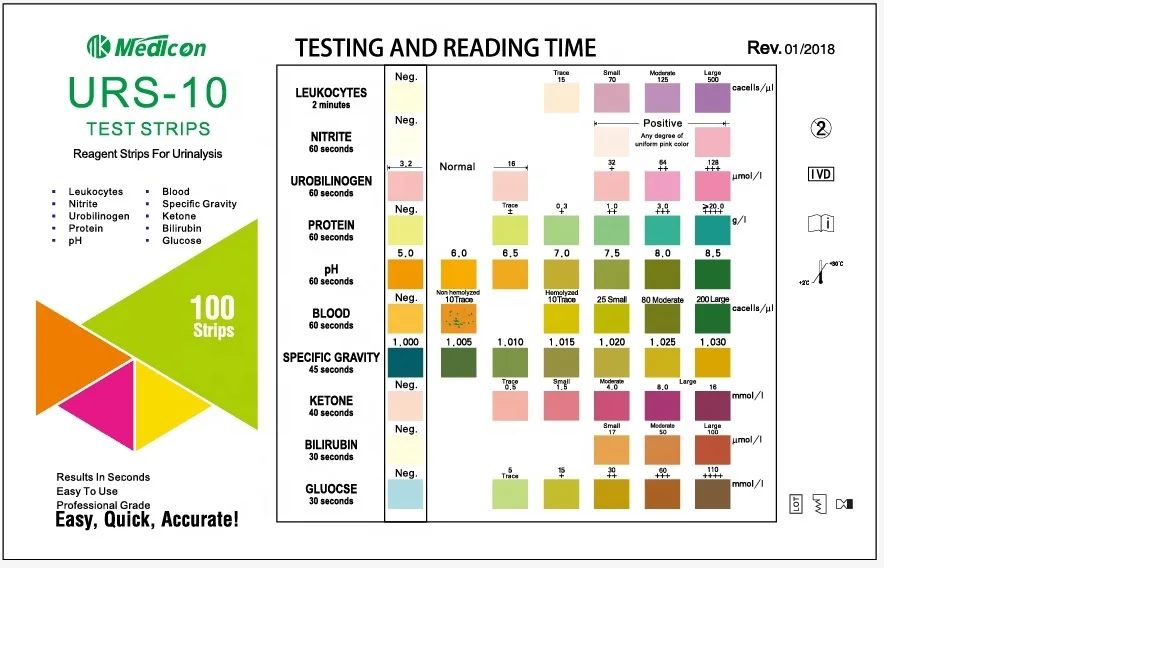 At
At
with minor kidney damage, the density of urine during the day can range from 1004 to 1023. 1023
– the minimum upper limit at which the kidneys are considered healthy.
Increased values are characteristic of dehydration, diabetes mellitus, excretion
protein in diseases of the kidneys, liver diseases and heart failure, a decrease in values - with
diabetes insipidus, chronic renal failure, heavy drinking or taking diuretics.
Urine acidity index (pH). Norm – 5.0−7.0
The acidity index of a healthy person normally fluctuates between 5.0 and 7.0 and in many respects
determined by the nature of the diet. With a meat diet, urine becomes acidic, the pH drops to 4.6-5.0. Vegetable and dairy
Diet, in contrast, causes alkalized urine and a pH above 7.0. Of the pathological conditions, a decrease in pH is characteristic
for dehydration, prolonged fasting, diabetes, fever, diarrhea. The rise occurs at
chronic renal failure, prolonged vomiting, hyperfunction of the parathyroid glands, tumors of the genitourinary
systems.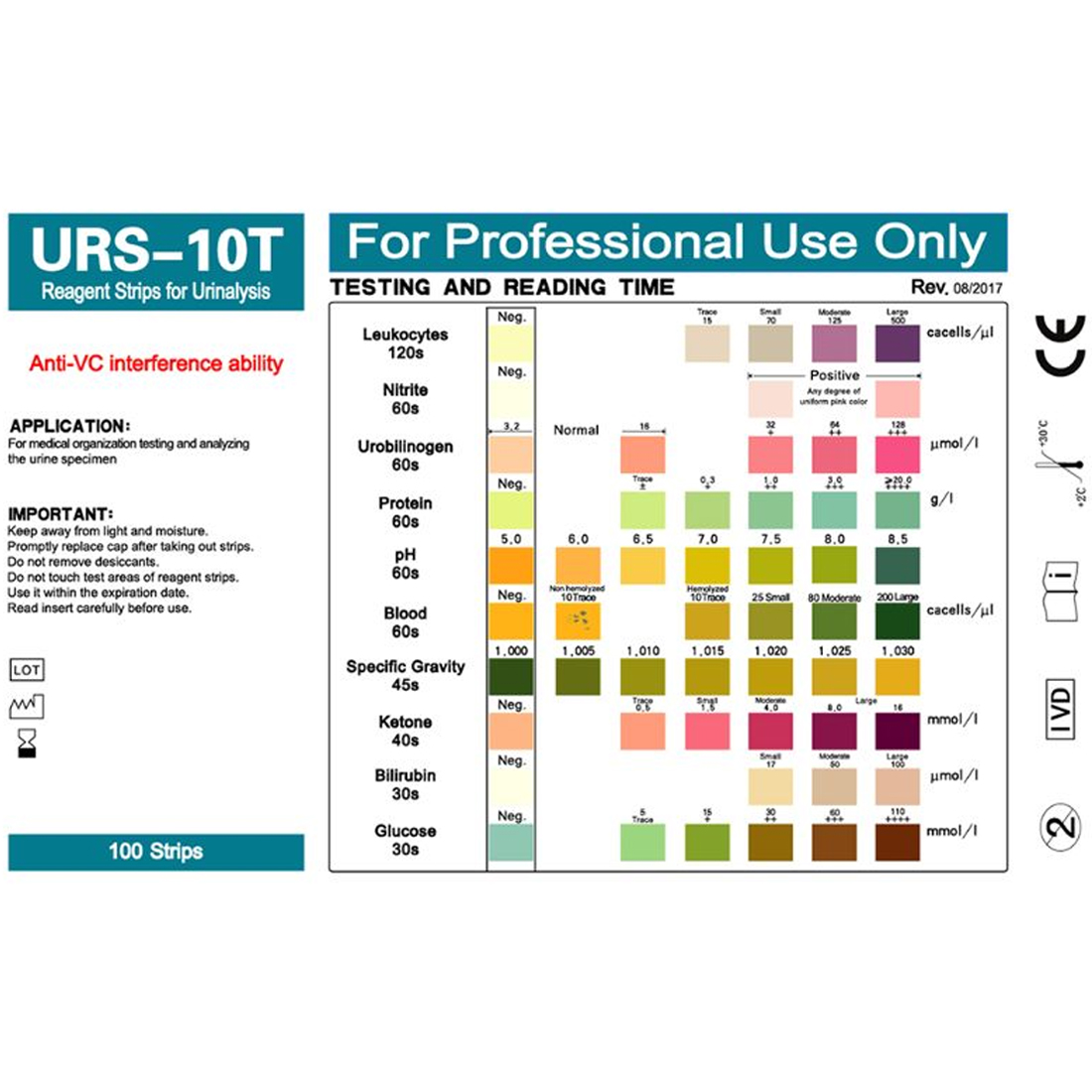
Protein (PRO). Norm – up to 0.033 g / l
Normally, the amount of protein excreted by the kidneys per day does not exceed 100-150 mg/day. (0.1
– 0.15 g / l), and in a single urine sample it should not be more than 0.033 g / l. In case of violation
kidney function and various diseases, protein in the urine can appear in much larger quantities.
The so-called transient proteinuria is distinguished – the episodic appearance of protein in the urine associated with physical
work, stress. Protein also appears in the urine during fever. The rest of the reasons are related to the development
pathologies, these are acute and chronic glomerulonephritis, pyelonephritis, inflammatory diseases of the urinary tract
(cystitis, urethritis) and tumors, hypertension and severe heart failure.
Urine glucose (GLU). No norm
Normally, glucose in the urine is absent or found in minimal amounts, as it is exposed to
reabsorption in the renal tubules. When the concentration of glucose in the blood is more than 9-10 mmol/l, this
When the concentration of glucose in the blood is more than 9-10 mmol/l, this
ability is lost. With age, as well as under the influence of diabetes and hypertension, the level decreases to 8.8
mmol/l and even less. In addition to diabetes, the causes of glucosuria can be acute pancreatitis, myocardial infarction,
severe injury, burns, pregnancy and simultaneous intake of large amounts of carbohydrates.
Bilirubin (BIL). No norm
The urine of healthy individuals contains minimal, undetectable amounts of bilirubin. He appears mainly
with damage to the liver parenchyma (viral hepatitis, cirrhosis of the liver, liver tumors or metastases in it), or with
mechanical obstruction of the outflow of bile (mechanical jaundice).
Urobilinogen (UBG). The norm is equal to 17 µkol / l or less than
This substance is a derivative of bilirubin, which is normally excreted in urine and feces. Wherein
the content of urobilinogen in urine should not exceed 17 µmol/l. If more is excreted in the urine
If more is excreted in the urine
urobilinogen, this condition is called urobilinogenuria. Characteristic of hemolysis (intravascular destruction
erythrocytes), but can also appear with the resorption of massive hematomas, various lesions of the parenchyma
liver (acute and chronic hepatitis, poisoning, liver tumors) and intestinal diseases (enterocolitis,
constipation, intestinal obstruction, purulent process in the intestines).
Ketone bodies (KET). No norm
These include acetone and related substances. The appearance of ketone bodies is the main sign
decompensation of diabetes mellitus. There is also alcoholic ketoacidosis on the background of hard drinking, ketonuria in acute
pancreatitis, thyrotoxicosis, but they can also appear for physiological reasons (protein intake
or prolonged starvation, major surgery and injury).
Hemoglobin in urine. No norm
The appearance of hemoglobin in the urine may indicate either the destruction of red blood cells in the bloodstream
(hemolysis), or bleeding from the genitourinary tract.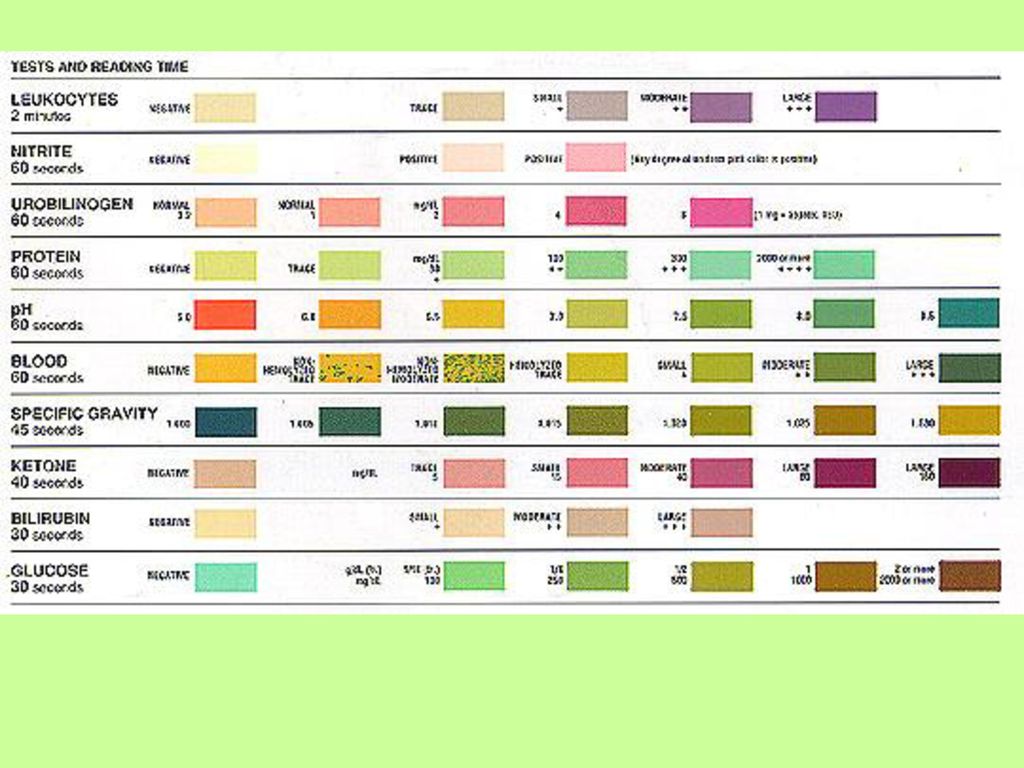 A hemoglobin test gives only a positive or
A hemoglobin test gives only a positive or
negative result, further diagnostics should be carried out by studying the urinary sediment and the
in this case, erythrocytes.
Nitrite (NIT). No norm
Normally, nitrites are absent in urine. Their detection indicates a long stay of urine in the urinary
bladder (more than 4 hours), especially in the case when foods rich in nitrates were consumed. But more often
the appearance of nitrites indicates the presence of bacteria in the genitourinary system that cause inflammation. For
to confirm this, it is necessary to carefully study the urinary sediment (detection of leukocytes, bacteria, etc.), which we will discuss in the second part of the article about
general clinical analysis of urine.
Ask a question
general practitioner
or a urologist
You can always find out about your health in the Doctis mobile app. First
consultation for free! Download directly
Now!
Read also on the topic
- 14 indicators.

We decipher the general blood test - 10 indicators.
Deciphering the analysis of urinary sediment - Interpretation of blood and urine sugar levels
- Biochemical blood test: interpretation of norms and deviations
The author of the article: Aleksey Yuryevich Fedorov
table of average values, interpretation of indicators, rules for passing
General or clinical analysis of urine is a set of diagnostic tests aimed at studying the physicochemical and biochemical properties of the patient’s urine, its microscopic examination. Conducting a general urine test is advisable in case of suspected diseases of the kidneys and urinary tract of various etiologies, endocrine disorders, acidosis and alkalosis, dehydration, poisoning, gout, hemolytic anemia, hepatitis and a number of other pathologies, and is also prescribed for preventive purposes. The subjects of the study are organoleptic indicators (volume, color, smell, transparency, foam formation), physicochemical characteristics (density, acidity), biochemical characteristics (protein, bilirubin), sediment composition.
| Index | Designation | Norm | Units |
|---|---|---|---|
| Organoleptic properties | |||
| Color | COLOR | Straw yellow to yellow | |
| Smell | Specific, unobtrusive | ||
| Foam | Virtually no foam when agitated | ||
| Transparency | TURB | Absolute | |
| Physical and chemical properties | |||
| Density | SG | 1003-1030 | g/l |
| Acidity, reaction | pH | 5–7.5 | |
| Biochemistry | |||
| Protein | PRO | 0–0.033 | g/l |
| Glucose | GLU | 0–0. 8 8 | mmol/l |
| Bilirubin | BIL | 0–8.5 | µmol/l |
| Urobilinogen | URO, UBG | 0–17 | µmol/l |
| Ketone bodies | KET | 0–0.5 | mmol/l |
| Nitrites | NIT | None | |
| Sediment microscopy | |||
| Epithelium | SQEP, NSE | Men: 0-9 Women: 0-15 | cells/µl |
| Slime | MUCS | Missing or traces of | |
| Erythrocytes | RBC, BLD | 0–11 | cells/µl |
| Leukocytes | WBC, LEU | Men: 0-16.5 Women: 0-27.5 | cells/µl |
| Hemoglobin | HGB | Missing | |
| Cylinders (hyaline, granular, waxy) | HYAL, UNCC | None | |
| Salts | None | ||
| Bacteria | BACT | None | |
| Parasites | None | ||
| Fungi | BYST | None |
Interpretation of the results of the general analysis of urine
Before proceeding to the interpretation of the results of the general analysis of urine, we must recall that all the information provided in the article is advisory and fact-finding and cannot be used to make a diagnosis or prescribe treatment. A doctor’s consultation is required! Now let’s look at each of the items in the table and find out what the difference between your results and the reference, that is, from the average indicators, may indicate.
A doctor’s consultation is required! Now let’s look at each of the items in the table and find out what the difference between your results and the reference, that is, from the average indicators, may indicate.
Colour. Straw yellow color is considered normal, but in a healthy person, depending on the diet and other factors, the shade can vary from colorless to amber. The thought of pathology is prompted by a clear change in color. Dark, beer color, up to brown and brown, indicates an increase in bilirubin or urobilinogen. If it looks like milk, leukocytes are increased; black urine indicates the presence of hemoglobin or myoglobin. Red color is a dangerous sign, hinting at the release of blood in the urine; in rare cases, bluish-green hues are observed, due to the processes of putrefaction in the intestines and the subsequent release of special coloring substances into the blood.
Smell. Smells like ammonia after urination in case of bacterial infections and inflammatory processes in the urinary system; smells of rotten fruit due to an increase in the concentration of ketone bodies, which is usually a symptom of diabetes; diabetes can also “smell” of acetone.
Transparency. Cloudy urine is caused by the deposition of salts, crystals, white and red blood cells, mucus and pus. Pronounced filamentous and flaky compounds often accompany pyelonephritis and infection of the lower urinary tract. But even the urine collected for analysis often becomes cloudy due to non-compliance with the storage conditions of the sample by the laboratory.
Foam . If a lot of persistent foam is formed during shaking, then this hints to the specialist at the likelihood of jaundice or an increased protein content. Other explanations may be the patient’s poor psycho-emotional state, concussion, circulatory disorders in the brain, advanced diabetes mellitus, heart failure, and a number of endocrine disorders.
Relative density. Specific gravity characterizes the ability of the kidneys to concentrate and dilute urine. The output of the indicator beyond the lower limits of the reference values indicates renal failure, polyuria, tubular pathology or diabetes insipidus of various etiologies.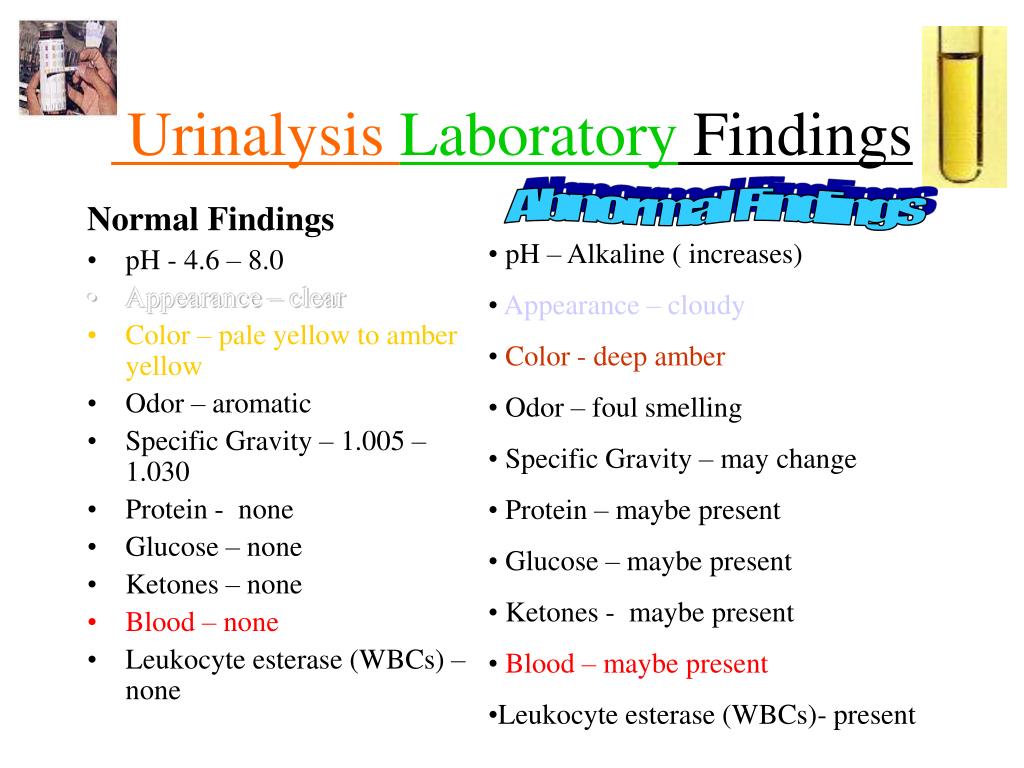 Elevated values of relative density often indicate the development of glomerulonephritis, nephrotic syndrome, diabetes mellitus, dehydration, or are the result of intravenous administration of a number of drugs and radiopaque drugs.
Elevated values of relative density often indicate the development of glomerulonephritis, nephrotic syndrome, diabetes mellitus, dehydration, or are the result of intravenous administration of a number of drugs and radiopaque drugs.
Acidity. In a healthy person, the reaction of urine is slightly acidic, it shifts to the alkaline side (pH> 7) with the use of a large amount of products of plant and dairy origin, and to the acid side (pH < 5) - products of animal origin. Pathological acidification of urine also causes hypokalemia, diabetes mellitus, gout, and alkalization causes diseases of the kidneys and urinary tract of an inflammatory or infectious nature, diarrhea, and vomiting.
Squirrels. The presence of protein in urine samples – proteinuria – can be a consequence of physical and emotional stress, a symptom of heart failure, arterial hypertension, elevated body temperature, preeclampsia in pregnant women, nephroptosis, trauma. The activity of the kidney filters can be disturbed due to a long stay on the legs, so sometimes the protein penetrates from the blood into the urine of hairdressers, salesmen, military and people in other professions with fixed work. Renal causes of proteinuria include damage to the tubules and glomeruli, nephrosclerosis. Neoplasms can also make this test item positive.
The activity of the kidney filters can be disturbed due to a long stay on the legs, so sometimes the protein penetrates from the blood into the urine of hairdressers, salesmen, military and people in other professions with fixed work. Renal causes of proteinuria include damage to the tubules and glomeruli, nephrosclerosis. Neoplasms can also make this test item positive.
Glucose. Urine should not contain sugar. If the glucose value in the results of the order of 0.1 mmol / l can be the result of an excess of sweets in the diet, then values of 0.9 mmol / l and above clearly indicate a high probability of diabetes mellitus. Other relatively common causes of glucosuria are pancreatitis, Cushing’s syndrome, Fanconi’s syndrome, and pregnancy.
Ketone bodies. The appearance of ketone bodies in the analyzes of a patient with diabetes mellitus indicates the progress of the disease. In patients without diabetes, ketone bodies are detected during fasting, due to a sharp decrease in carbohydrates in the diet, or a prolonged fever.
Bilirubin. Determining the amount of bilirubin in the urine becomes possible in case of damage to the liver parenchyma, violation of the processes of outflow of bile, cirrhosis of the liver, viral hepatitis and metastasis of neoplasms to the liver.
Urobilinogen. Traces of urobilinogen in the urine may indicate blood diseases (hemolytic and pernicious anemia, hemolysis, polycythemia, consequences of extensive hematomas), diseases of the gastrointestinal tract (inflammatory and obstructive diseases), liver diseases (viral hepatitis, chronic hepatitis, cirrhosis, secondary insufficiency , neoplasms), disorders of the cardiovascular system (myocardial infarction, heart and circulatory failure) or intoxication of the body with alcohol, infection or organic compounds.
Nitrites. Normally, nitrites in the urine are absent, their presence indicates infection of the urinary tract.
Erythrocytes. The correct interpretation of erythrocyturia requires taking into account the history and results of a blood test, since there are a lot of reasons for an increase in erythrocytes. The increase in concentration may have a physiological explanation and be temporary (long standing, exhausting walks and physical activity), may accompany medication. If the causes of erythrocyturia are still pathological, then the specialist may suspect hypertension, diathesis, glomerulonephritis, urolithiasis, pyelonephritis, neoplasm, systemic lupus erythematosus, vasculitis, infective endocarditis, heart failure, injury or kidney infarction.
The increase in concentration may have a physiological explanation and be temporary (long standing, exhausting walks and physical activity), may accompany medication. If the causes of erythrocyturia are still pathological, then the specialist may suspect hypertension, diathesis, glomerulonephritis, urolithiasis, pyelonephritis, neoplasm, systemic lupus erythematosus, vasculitis, infective endocarditis, heart failure, injury or kidney infarction.
Leukocytes. The level of leukocytes in the urine increases in almost all diseases of the kidneys and genitourinary system: all forms of pyelonephritis, glomerulonephritis, cystitis, urethritis, prostatitis, urolithiasis, lupus nephritis, etc. Fever may be another explanation.
Hemoglobin. Hemoglobin accumulates in the urine in parallel with erythrocyturia, with myositis, massive damage to muscle tissue, thrombus formation in muscle vessels, myocardial infarction, hemolytic anemia, burns, poisoning with fungi and phenol.
Epithelium. There are elements of squamous, transitional and renal epithelium. The appearance/increase of squamous epithelium cells is observed with infection of the urinary tract, transitional epithelium – with cystitis, pyelonephritis and urolithiasis, renal epithelium – with glomerulonephritis, pyelonephritis, poisoning with salts of heavy metals, circulatory pathology of the kidneys.
Cylinders. Detection of hyaline casts in the urine indicates kidney pathology, heart failure or overheating of the body (fever, heat stroke, sunstroke). In some cases, they are found after excessive physical exertion, taking diuretics and exacerbations of arterial hypertension. Granular casts are excreted in the urine with glomerulonephritis, pyelonephritis, diabetic nephropathy, viral diseases, fever, and lead intoxication. An increase in waxy casts indicates amyloidosis, renal failure, or nephrotic syndrome.
Salts. Almost absent in the urine of a healthy person, their appearance hints at a violation of mineral metabolism, the development of urolithiasis, nephrolithiasis, dehydration of the body, chronic renal failure.
Slime. The content of mucus in the sample is most often explained by a banal violation of the rules for collecting urine. But also mucus is actively excreted in the urine during inflammatory processes.
Bacteria, fungi, parasites. Their appearance in the urine is explained by the corresponding disease of the urinary tract.
How to prepare and take a urine test
- One day before urine collection, you should avoid foods containing strong natural dyes: beets, blueberries, carrots, etc. It is also recommended to avoid alcohol, coffee and strong tea.
- On the eve of the sample, you should refrain from visiting the bath and sauna, from strong physical exertion and from taking diuretics (possibly after consulting a doctor).
- Girls are not recommended to take the test during menstruation, as even slight traces of blood in the urine can make the test results indicative.
- If you are taking a course of medication, you should notify your doctor or laboratory assistant about the medications you are taking.







